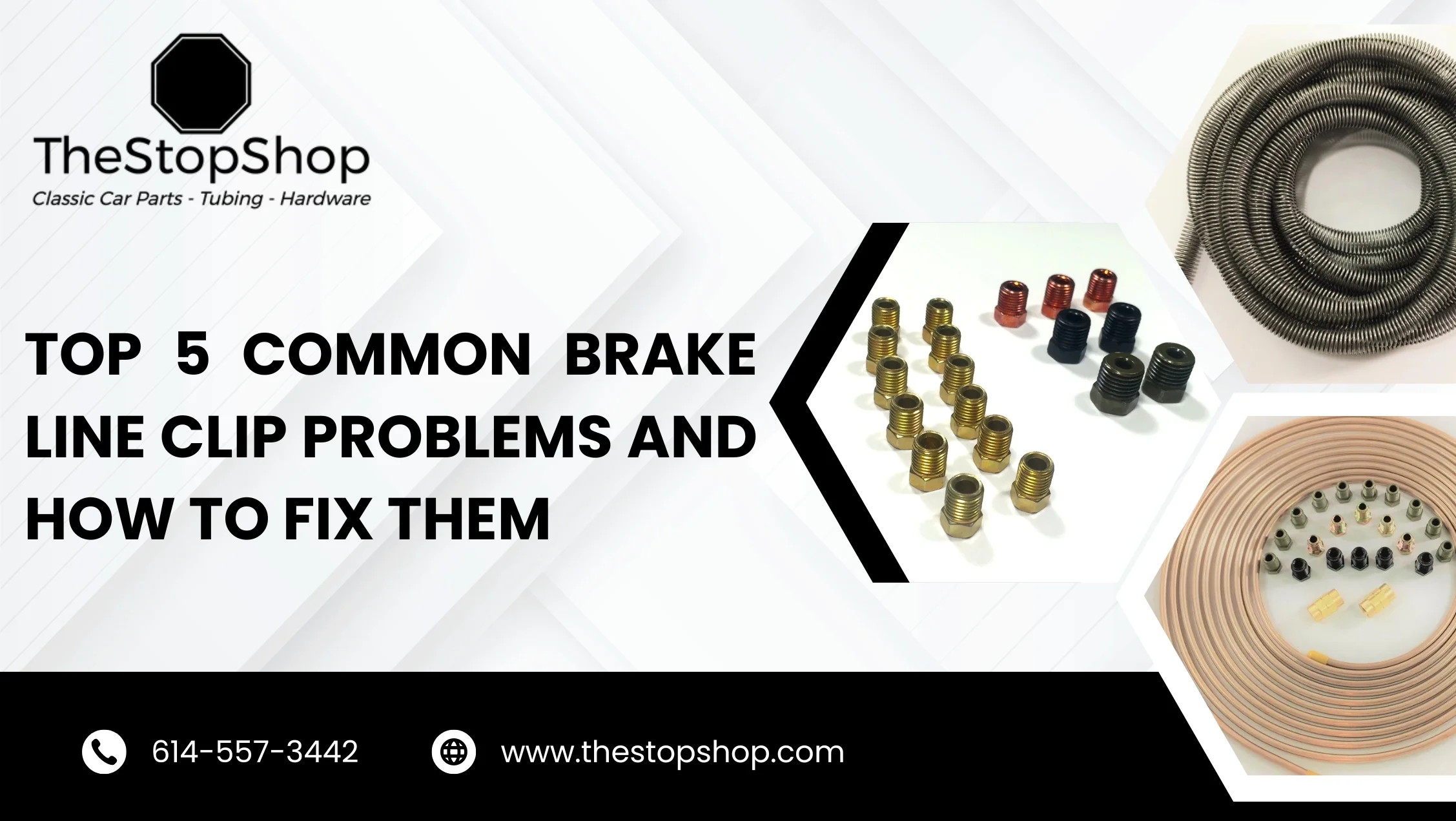Brake line clips might be small components, but their role in securing brake and fuel lines is critical. They ensure that brake lines and fuel line tubing remain in place and function correctly. Despite their importance, brake line clips can present several issues that may impact the performance of your vehicle’s braking and fuel systems. This blog explores the five most common brake line clip problems and how to address them, emphasizing the use of materials like copper nickel brake lines, 3/16 brake lines, and copper nickel fuel lines.
How to Fix these 5 Common Brake Line Clip Problems?
1. Loose Brake Line Clips
A frequent problem with brake line clips is that they can become loose over time. This issue is often due to constant vibrations, exposure to environmental elements like moisture and debris, or general wear and tear. When brake line clips loosen, they can allow the brake line to shift out of its intended position, potentially causing damage from rubbing or even leading to a brake line rupture in severe cases.
To address this issue, regularly inspect your brake line clips for any signs of loosening. If you find a loose clip, replacing it with a new one is advisable. Ensure that the replacement clip is designed for the specific brake line size, such as a 3/16 brake line. Opt for high-quality, corrosion-resistant clips, especially if your vehicle is frequently exposed to moisture and road salt. Copper nickel brake lines are an excellent choice for such conditions due to their resistance to corrosion and vibrations, making them a good match for secure and stable clip performance.
2. Corrosion of Brake Line Clips
Corrosion is a significant issue, particularly in regions with harsh winters or where road salt is used extensively. Brake line clips made from low-grade metals are highly susceptible to rust and corrosion, which can weaken and eventually break the clips. Corroded clips leave the brake lines unsecured, increasing the risk of damage or leakage.
To combat corrosion, choose clips made from rust-resistant materials such as stainless steel or high-quality plastic. Additionally, use brake lines that are resistant to corrosion. A copper nickel brake line, known for its durability and corrosion resistance, pairs well with these clips. Regularly inspect your vehicle’s undercarriage for signs of corrosion, especially after winter months. Replace any rusted clips immediately to prevent further issues.
3. Broken or Snapped Brake Line Clips
Brake line clips can also break or snap, particularly if they are made from cheap materials or if they are exposed to extreme temperatures and harsh conditions. Broken clips can leave brake lines unsecured, leading to potential rubbing against other components and subsequent damage or leakage.
To prevent clips from breaking, invest in high-quality, durable brake line clips. Metal clips generally offer better longevity compared to plastic ones. When working with a copper nickel fuel line or brake line, ensure the clips are appropriate for the line’s size and material. Regular maintenance and inspection can help identify any signs of wear or damage early. Replace any broken clips promptly to avoid compromising the brake system.
4. Incorrect Clip Placement
Incorrect placement of brake line clips can lead to unnecessary tension on the brake or fuel lines. This misalignment can cause kinks, damage, or wear over time. Clips placed too far apart or in improper positions can allow the brake lines to move excessively, increasing the risk of damage.
To ensure proper placement, refer to your vehicle’s manual or manufacturer guidelines for the correct positioning and spacing of brake line clips. When installing new brake lines, such as copper nickel brake lines, ensure that the clips are placed in a way that provides adequate support without exerting undue stress. Check for areas where the brake line may rub against other components and adjust the clip placement as needed. Correct installation of inverted flare fittings is also crucial, as improperly secured fittings can cause leaks in the brake line system.
5. Using Incorrect Sized Brake Line Clips
Using brake line clips that are either too small or too large for the brake line tubing can cause several problems. Clips that are too tight may crush the brake line, while those that are too loose will not secure the line properly, leading to vibration and potential damage.
To address sizing issues, always measure your brake lines before selecting clips. For example, a 3/16 brake line requires clips that are specifically designed for that size. Choosing clips that are appropriately sized for the brake line and the material of the fuel line tubing is essential. For copper nickel brake lines, which are softer and more malleable, ensure that the clips hold the tubing securely without causing deformation. Proper installation of inverted flare fittings is also important to prevent leaks caused by excessive pressure from improperly sized clips.
Conclusion
Brake line clips are a small but vital component in maintaining the integrity of your vehicle’s brake and fuel systems. Issues such as looseness, corrosion, breakage, incorrect placement, and improper sizing can significantly impact the performance and safety of your vehicle. By choosing the right materials—such as copper nickel brake lines—and using high-quality, appropriately sized clips, you can prevent many common problems and ensure your brake system operates effectively. Regular inspection and maintenance are key to prolonging the life of your brake lines and maintaining vehicle safety.
If you found this article helpful, click here for more.









